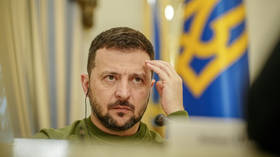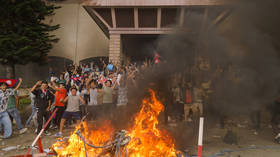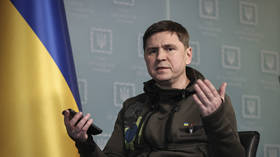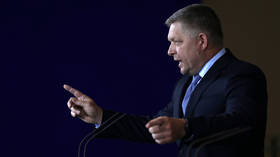“Shrinking ozone layer cools the Earth”
A new report by British scientists has claimed the hole in the ozone layer may be protecting parts of Antarctica from global warming.
It says the frozen continent may be cooling, adding fuel to the climate change debate ahead of the Copenhagen climate conference in two days.
This icy continent – Antarctica – is uniquely biodiverse, and holds the secrets to the Earth’s climate for the last 800,000 years. Huge chunks of ice breaking off and falling into the sea – such are the pictures you usually see of it.
“The facts about Antarctica are that it’s been cooling for about fifty years. New ice breaking off is evidence of nothing whatsoever – except new ice always breaks off,” explains climate forecaster Piers Corbyn.
According to the British Antarctic Survey (BAS), there has been a 10% increase in sea ice in Antarctica since 1980. But the astonishing conclusion of a new report by BAS is that one man-made phenomenon – the ozone hole – is protecting the icy continent from another – global warming.
“One of the big mysteries for us was why we are seeing a warming over the Arctic but at the same time we’re seeing a cooling over the Antarctic. So what we think has happened is that the ozone hole has shielded us from the impacts of global warming,” says John Turner from the British Antarctic Society.
The ozone hole has cooled the stratosphere, says BAS. That strengthens cyclonic winds, creating more open water, which leads to more sea-ice forming.
Climate change skeptics say the hole in the ozone layer is just a convenient explanation to fit in with the man-made climate change dogma. According to them, the hole would have no effect.
“They also make rather complicated claims about ozone, or rather the lack of it. The ozone hole closing is a sign of extreme cold, nothing to do with global warming. It’s nonsense. It’s just spin, put out just before Copenhagen to excite politicians and blind them with science, and make them feel like they’ve got justification for taxing the world,” believes Piers Corbyn.
The British Antarctic Survey admits the models currently being used to distinguish between natural and man-made climate variability, and to predict what will happen in the future, are crude. It says the Antarctic holds the key to refining those methods.
“In the Antarctic we drill a lot of ice cores, of several centimeters across, which can go back up to a million years,” says John Turner. “We collected one ice core which gives us a very detailed climate record going back 800,000 years – and that’s the most detailed record we’ve got on Earth. That shows all the ice ages – we have one roughly every 100,000 years – and that shows that CO2 and the main greenhouse gases have varied a lot over the millennia.”
Whatever the effects of the ozone hole are, they will not last forever. BAS says over the next sixty years, the hole will heal.
By then, melting ice in Antarctica will have contributed to a rise in sea levels of around 1.5 meters. If the British Antarctic Survey’s predictions come true, some low lying areas could be in danger of being permanently submerged under water by the turn of the next century.











